How Strong Is The British Army - 8th Strongest Militaries In The World
 |
| How United Kingdom Has The World's 8th Strongest Militaries? |
*British Army ranks 8 - The Global Firepower Index
*UK is the world’s second most powerful nation - Report by ‘Audit of Geopolitical Capability’
*British armed forces trail in 9th place in the list of Top 10 militaries in the world - Researchers at website Military Direct.
The British Army is the principal land warfare force of the United Kingdom, a part of the British Armed Forces along with the Royal Navy and the Royal Air Force. To learn more about its history, powers, and strength, and how it has the world's 8th strongest militaries, keep scrolling!
History of British Army
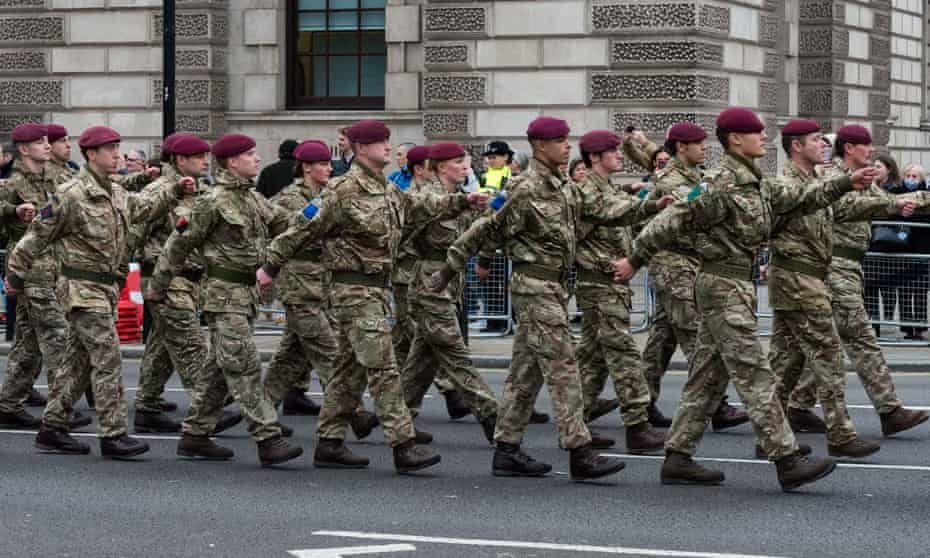 |
| Photo: The Guardian |
British army, in the United Kingdom, the military force charged with national defense and the fulfillment of international mutual defense commitments.
The modern British Army traces back to 1707, with antecedents in the English Army and Scots Army that were created during the Restoration in 1660. The term British Army was adopted in 1707 after the Acts of Union between England and Scotland. Members of the British Army swear allegiance to the monarch as their commander-in-chief, but the Bill of Rights of 1689 and Claim of Right Act 1689 require parliamentary consent for the Crown to maintain a peacetime standing army. Therefore, Parliament approves the army by passing an Armed Forces Act at least once every five years. The army is administered by the Ministry of Defence and commanded by the Chief of the General Staff.
The army of England before the Norman Conquest consisted of the king’s household troops (housecarls) and all freemen able to bear arms, who served under the fyrd system for two months a year. After 1066 the Normans introduced feudalism and mounted troops (knights) and their auxiliaries, infantry, and military artisans. Mercenaries were employed during the Hundred Years’ War (1337–1453) and the Wars of the Roses (1455–85) in combination with the militia. With the Battle of Crécy in 1346, archers became important, the longbow being a major innovation of warfare.
During the 18th and 19th centuries, as Britain consolidated its colonial empire, the army grew in size and developed as an effective fighting force. The army established standing forces in the colonies and distinguished itself during the Napoleonic Wars (1800–15). Reforms were carried out to improve its organization and efficiency in the late 1800s. Between 1905 and 1912 the Territorial Force (after 1921, Territorial Army) and Special Reserve were established. The army was greatly increased in size by conscription during World War I but was reduced to a minimum with an end to conscription after 1919. In July 1939, however, conscription was again enforced.
Major changes in the British army occurred after 1945. Troops stationed overseas were returned home as the British colonies gained independence, and the military forces were placed in Europe or absorbed into the Home Guard. In 1960 conscription was ended and an all-volunteer army again created. With the introduction of nuclear weapons, the Territorial Army was greatly reduced.
Modern Army of The UK
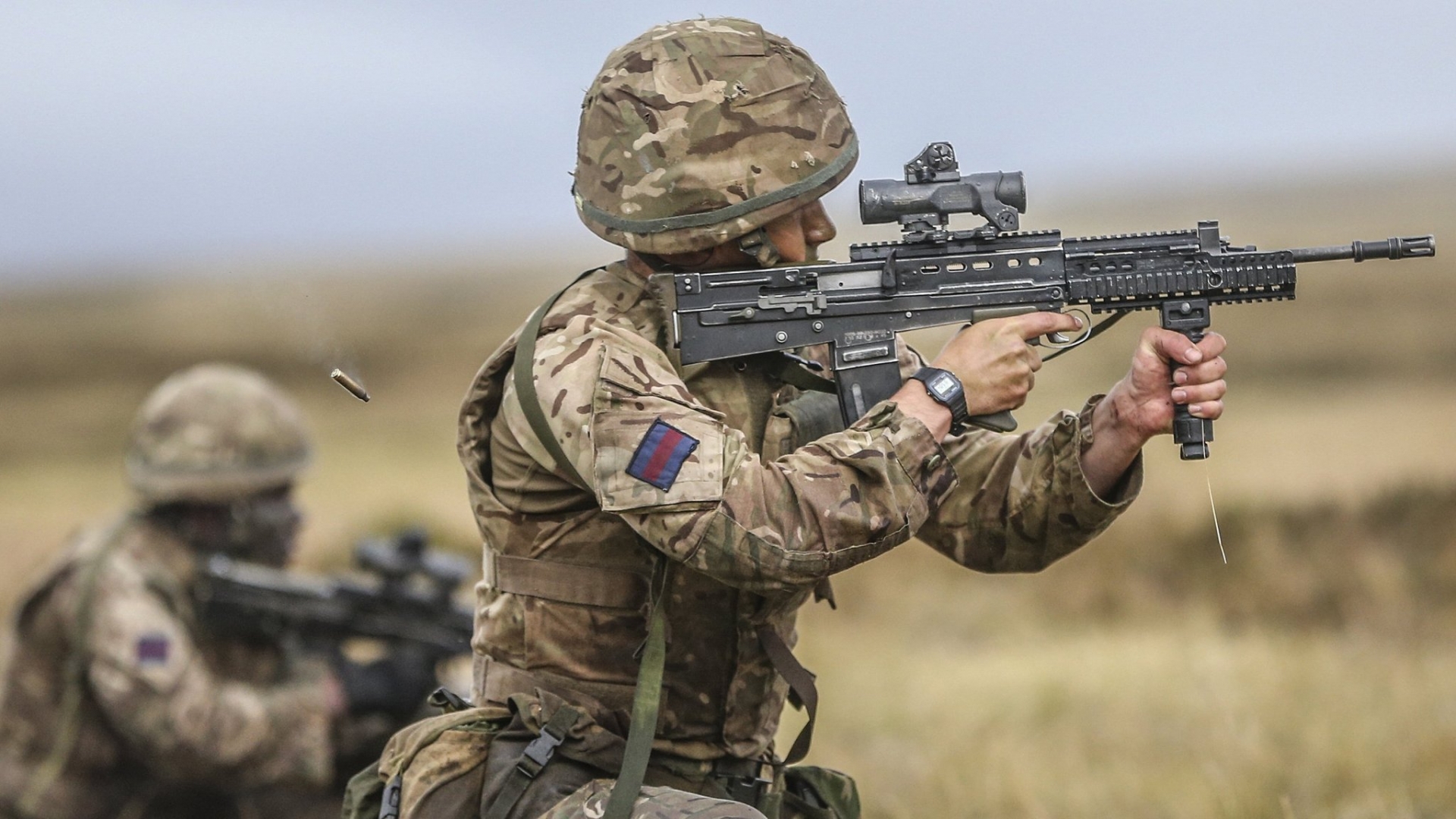 |
| Photo: Financial Times |
The British Army has been a volunteer force since national service ended during the 1960s. Since the creation of the part-time, reserve Territorial Force in 1908 (renamed the Army Reserve in 2014), the full-time British Army has been known as the Regular Army.
In July 2020 there were just over 78,800 Regulars, with a target strength of 82,000, and just over 30,000 Army Reservists, with a target strength of 30,000. All former Regular Army personnel may also be recalled to duty in exceptional circumstances during the 6-year period following completion of their Regular service, which creates an additional force known as the Regular Reserve.
As of 2021, the British Army comprises 82,230 regular full-time personnel and 30,030 reserve personnel.
Britain Is The World's Second Truly Biggest Power
A new report says the UK is the world’s second most powerful nation, maintaining its position in the rankings. The findings were made by the Henry Jackson Society, a think tank group, in its annual ‘Audit of Geopolitical Capability’. The UK, boosted by its overseas investment, aid and military, is ranked ahead of China and Russia.The audit finds the UK retains a military might greater than that of China and technological prowess 'far in advance' of Russia.
The study describes the UK as 'a truly global power' which has the ability to 'project and extend itself …around the world'. A 'global power' is said to mean the country is capable of protecting itself and defending its own interests anywhere in the world. Meanwhile, Russia is seen as a 'regional power' which can only prosecute objectives within its own region, according to the report.
Top 20 Most Powerful Nation - The Global Audit’s Rankings
1 USA
2 UK
3 China
4 France
5 Germany
6 Japan
7 Canada
8 Australia
9 India
10 Russia
11 South Korea
12 Italy
13 Brazil
14 South Africa
15 Argentina
16 Indonesia
17 Turkey
18 Mexico
19 Saudi Arabia
20 Nigeria
United Kingdom Military Strength
For 2022, United Kingdom is ranked 8 of 140 out of the countries considered for the annual GFP review. It holds a PwrIndx score of 0.1382 (a score of 0.0000 is considered 'perfect').
In 2021 there were over 149 thousand personnel serving in the British Armed Forces, compared with just 144 thousand serving in 2019. In the first half of the twentieth century, there are two huge spikes in the number of personnel which represent the final years of World War One and World War Two, with the British Armed Forces numbering 4.58 million and 4.69 million in 1918 and 1945 respectively. Ever since 1945 the size of the UK Armed Forces has been in almost constant decline, with the noticeable exception of the early 1950s, where Britain's armed forces increased by almost 200 thousand because of the Korean War.
Top 10 Militaries in the World - By Military DirectUK military now less mighty than India's as it trails in 9th with China number 1. China has the most powerful military in the world with the US in second place and the UK trailing in ninth, a study has revealed. But Britain’s Armed Forces still managed to finish ahead of Germany in the global top 10. Beijing’s military rated 82 out of 100 in a study using multiple factors to measure the strongest nations. UK troops came second only to Russia in terms of fitness levels, measured by how much gear they carry, with the US third and Australia coming in at fourth. Canada rated lowest in fitness but researchers at website Military Direct said their forces were the best paid. 1 China (82/100) 2 United States (74) 3 Russia (69) 4 India (61) 5 France (58) 6 Saudi Arabia (56) 7 South Korea (55) 8 Japan (45) 9 UK (43) 10 Germany (39) |
The winds of change
There are several reasons why the number of personnel in Britain’s armed forces has declined. Britain is involved in a far fewer conventional military conflicts today than it was in the past. As the size of Britain’s empire declined rapidly after 1945, so too did the its global military commitments. There are also more recent developments such as the UK government’s Strategic Defence and Security Review of 2010, which outlined personnel would be cut throughout the 2010s in order to modernize the UK’s armed forces.
Branches of the UK military
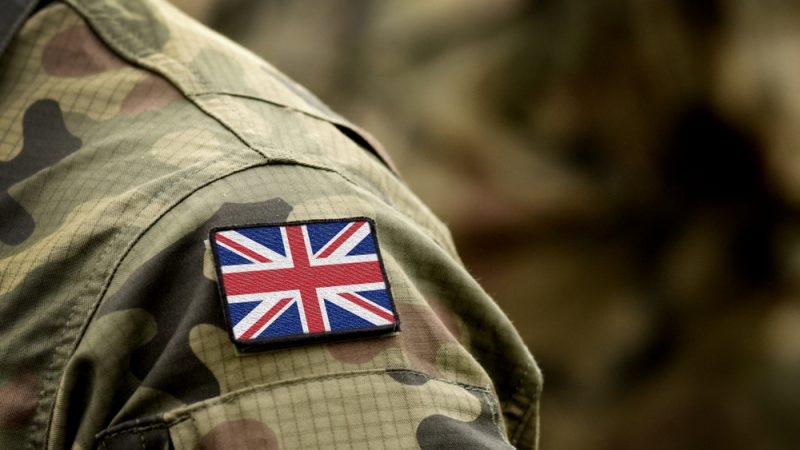 |
| Photo: Getty Images |
There are four branches of the UK armed forces, the British Army, the Royal Navy, the Royal Air Force, and the Royal Marines. Of the 149 thousand people serving in the UK’s armed forces in 2021, over half of them were in the British Army, which had 82 thousand personnel. The next largest branch was the RAF at 33.2 thousand, followed by the Royal Navy at 27.21 thousand, and finally the Royal Marines, which was the smallest branch in terms of personnel, at 6.64 thousand.
Royal Navy
The Royal Navy is a technologically sophisticated naval force, and as of January 2021 consists of 79 commissioned ships with an additional 13 support vessels of various types operated by the Royal Fleet Auxiliary. Command of deployable assets is exercised by the Fleet Commander of the Naval Service. Personnel matters are the responsibility of the Second Sea Lord/Commander-in-Chief Naval Home Command, an appointment usually held by a vice-admiral.
The Surface Fleet consists of aircraft carriers, amphibious warfare ships, destroyers, frigates, patrol vessels, mine-countermeasure vessels, and other miscellaneous vessels. The Surface Fleet has been structured around a single fleet since the abolition of the Eastern and Western fleets in 1971. The recently built Type 45 destroyers are technologically advanced air-defence destroyers. The Royal Navy has commissioned two Queen Elizabeth-class aircraft carriers, embarking an air-group including the advanced fifth-generation multi-role fighter, the F-35B.
A submarine service has existed within the Royal Navy for more than 100 years. The Submarine Service's four Vanguard-class nuclear-powered submarines carry Lockheed Martin's Trident II ballistic missiles, forming the United Kingdom's nuclear deterrent. Seven Astute-class nuclear-powered attack submarines have been ordered, with four completed and three under construction. The Astute class are the most advanced and largest fleet submarines ever built for the Royal Navy, and will maintain Britain's nuclear-powered submarine fleet capabilities for decades to come.
Royal Marines
The Royal Marines are the Royal Navy's amphibious troops. Consisting of a single manoeuvre brigade (3 Commando) and various independent units, the Royal Marines specialise in amphibious, arctic, and mountain warfare. Contained within 3 Commando Brigade are three attached army units; 383 Commando Petroleum Troop RLC, 29 Commando Regiment Royal Artillery, a field artillery regiment based in Plymouth, and 24 Commando Regiment Royal Engineers. The Commando Logistic Regiment consists of personnel from the Army, Royal Marines, and Royal Navy.
British Army
The British Army is made up of the Regular Army and the Army Reserve. The army has a single command structure based at Andover and known as "Army Headquarters". Deployable combat formations consist of two divisions (1st Armoured and 3rd Mechanised) and eight brigades. Within the United Kingdom, operational and non-deployable units are administered by two divisions, Force Troops Command, and London District.
The Army has 50 battalions (36 regular and 14 reserve) of regular and reserve infantry, organised into 17 regiments. The majority of infantry regiments contains multiple regular and reserve battalions. Modern infantry have diverse capabilities and this is reflected in the varied roles assigned to them. There are four operational roles that infantry battalions can fulfil: air assault, armoured infantry, mechanised infantry, and light role infantry. Regiments and battalions e.g.: the Parachute Regiment, exist within every corps of the Army, functioning as administrative or tactical formations.
Armoured regiments are equivalent to an infantry battalion. There are 14 armoured regiments within the army, ten regular and four yeomanry (armoured reserve), of which four are designated as "Armoured", three as "Armoured Cavalry", and six as "Light Cavalry". Army 2020 Refine has seen developments which will further modify the Royal Armoured Corps. with two existing regiments forming the core of two new STRIKE Brigades. These two regiments, along with the Armoured Cavalry will be equipped with the "Ajax" armoured fighting vehicle, a new £3.5 billion procurement programme. The Ajax will be employed in the task organisation and roles of both Armoured Cavalry and Medium Armour. With a slight exception of the Household Cavalry, which maintains quasi-autonomy within the Household Division, armoured regiments and their yeomanry counterparts collectively form the Royal Armoured Corps.
Arms and support units are also formed into similar collectives organised around specific purposes, such as the Corps of Royal Engineers, Army Air Corps and Royal Army Medical Corps.
Royal Air Force
The Royal Air Force has a large operational fleet that fulfils various roles, consisting of both fixed-wing and rotary aircraft. Frontline aircraft are controlled by Air Command, which is organised into five groups defined by function: 1 Group (Air Combat), 2 Group (Air Support), 11 Group (Air and Space operations), 22 Group (training aircraft and ground facilities) and 38 Group (Royal Air Force's Engineering, Logistics, Communications and Medical Operations units). In addition 83 Expeditionary Air Group directs formations in the Middle East and the 38 Group combines the expeditionary combat support and combat service support units of the RAF. Deployable formations consist of Expeditionary Air Wings and squadrons—the basic unit of the Air Force. Independent flights are deployed to facilities in Afghanistan, the Falkland Islands, Iraq, and the United States.
The Royal Air Forces operates multi-role and single-role fighters, reconnaissance and patrol aircraft, tankers, transports, helicopters, unmanned aerial vehicles, and various types of training aircraft. Ground units are also maintained by the Royal Air Force, most prominently the RAF Police and the Royal Air Force Regiment (RAF Regt). The Royal Air Force Regiment essentially functions as the ground defence force of the RAF, optimised for the specialist role of fighting on and around forward airfields, which are densely packed with operationally vital aircraft, equipment, infrastructure and personnel . The Regiment contains nine regular squadrons, supported by five squadrons of the Royal Auxiliary Air Force Regiment. In addition, it provides the UK's specialist Chemical, Biological, Radiological and Nuclear capability. It also provides half of the UK's Forward Air Controllers and the RAF's contribution to the Special Forces Support Group. By March 2008, the three remaining Ground Based Air Defence squadrons (equipped with Rapier Field Standard C) had disbanded or re-roled and their responsibilities transferred to the British Army's Royal Artillery.
The Standard UK Military Weapons
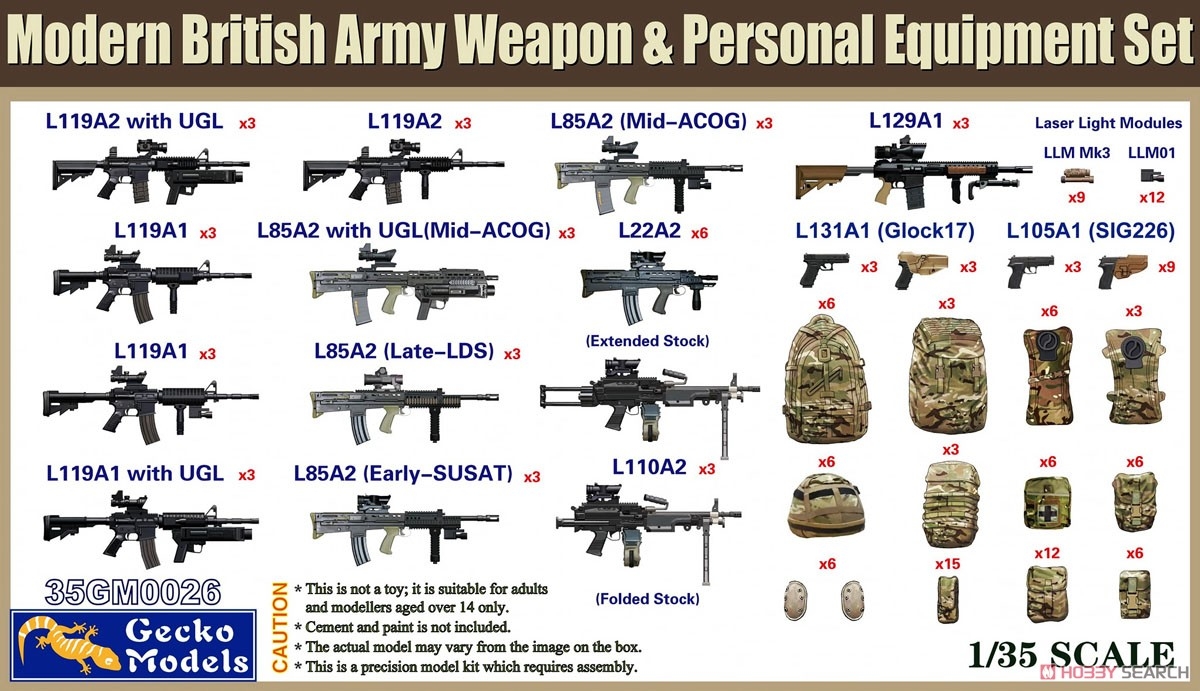 |
| Photo: 1999.co.jp |
SAS Weapons
The Special Air Service (SAS) is a special forces unit of the British Army. In 1941, the SAS was founded as a regiment, and in 1950, it was reconstituted as a corps. The unit specialises in a number of roles including counter-terrorism, hostage rescue, direct action and covert reconnaissance. Much of the information about the SAS is highly classified, and the unit is not commented on by either the British government or the Ministry of Defence due to the secrecy and sensitivity of its operations.
The corps currently consists of the 22nd Special Air Service Regiment, the regular component, as well as the 21st Special Air Service Regiment (Artists) (Reserve) and the 23rd Special Air Service Regiment (Reserve), which are reserve units, all under the operational command of United Kingdom Special Forces. Its sister unit is the Royal Navy's Special Boat Service which specialises in maritime counter-terrorism. Both units are under the operational control of the Director Special Forces.
The Special Air Service traces its origins to 1941 and the Second World War. It was reformed as part of the Territorial Army in 1947, named the 21st Special Air Service Regiment (Artists Rifles). The 22nd Special Air Service Regiment, which is part of the regular army, gained fame and recognition worldwide after its televised rescue of all but two of the hostages held during the 1980 Iranian Embassy siege.
SBS Weapons
The Special Boat Service (SBS) is the special forces unit of the United Kingdom's Royal Navy. The SBS can trace its origins back to the Second World War when the Army Special Boat Section was formed in 1940. After the Second World War, the Royal Navy formed special forces with several name changes—Special Boat Company was adopted in 1951 and re-designated as the Special Boat Squadron in 1974—until on 28 July 1987 when the unit was renamed as the Special Boat Service after assuming responsibility for maritime counter-terrorism. Most of the operations conducted by the SBS are highly classified, and are rarely commented on by the British government or the Ministry of Defence, owing to their sensitive nature.
The Special Boat Service is the maritime special forces unit of the United Kingdom Special Forces and is described as the sister unit of the British Army 22nd Special Air Service Regiment (22nd SAS), with both under the operational control of the Director Special Forces. In October 2001, full command of the SBS was transferred from the Commandant General Royal Marines to the Commander-in-Chief Fleet. On 18 November 2003, the SBS were given their own cap badge with the motto "By Strength and Guile". The SBS has traditionally been manned mostly by Royal Marines Commandos.
SA80
The SA80 (Small Arms for the 1980s) is a British family of 5.56×45mm NATO service weapons used by the British Army. The L85 Rifle variant has been the standard issue service rifle of the British Armed Forces since 1987, replacing the L1A1 Self-Loading Rifle. The first prototypes were created in 1976, with production of the A1 variant starting in 1985 and ending in 1994. The A2 variant came to be as the result of a significant upgrade in the early 2000s by Heckler & Koch and remains in service as of 2020. The A3 variant was first issued in 2018 with several new improvements.
The remainder of the SA80 family comprises the L86 Light Support Weapon, the short-barrelled L22 Carbine and the L98 Cadet rifle.
The SA80 was the last in a long line of British weapons (including the Lee–Enfield family) to come from the Royal Small Arms Factory, the national arms development and production facility at Enfield Lock, before its weapons factory was closed down in 1988.
Glock 17 Pistol
The Glock 17 is the original 9×19mm Parabellum model, with a standard magazine capacity of 17 rounds, introduced in 1982. Several modified versions of the Glock 17 have been introduced:
Glock 17L: Introduced in 1988, the 17L incorporates a longer slide and extended barrel. Initially, the Glock 17L had three holes in the top of the barrel and a corresponding slot in the slide; however, later production pistols lack the holes in the barrel. The Glock 17L is manufactured in limited quantities.
Glock 17C: Introduced in 1996, the 17C incorporates slots cut in the barrel and slide to compensate for recoil. Many other Glock pistols now come with this option, all with a "C" suffix on the slide.
Glock 17MB: The 17MB is a version with ambidextrous magazine catch. This model, along with the other MB variants, was no longer available upon the introduction of the fourth-generation models, which have a reversible magazine catch.
Glock 17M: Introduced in 2016, the 17M was created in response to an FBI solicitation for a new full-size 9mm pistol. Differences from the Generation 4 model include removal of the finger grooves, ambidextrous slide lock, rounded slide nose profile, flared magazine well with new magazine baseplates, and a tougher finish on metal components. The Glock 17M also abandons the polygonal rifling of previous models for conventional rifling. As of 2017, the Federal Bureau of Investigation, the South Carolina Highway Patrol and the Ontario Provincial Police have adopted the pistol as standard.
Diemaco C7 Assault Rifle
The Diemaco C7 is an assault rifle that was used by the Pathfinder Platoon and Brigade Patrol Troop (BPT). The C7 and C7A1 variant were also used by British Special Forces.
The C7 is a close copy of the M16A2, the rifle developed to replace the M16A1 in the United States military. Canadian arms company Diemaco (now Colt Canada) developed the rifle for the Canadian military. Small improvements to the original design include a heavier hammer-forged barrel. The C7 fires 5.56x45mm NATO rounds from 30-round magazines in either semi or fully automatic mode (unlike the M16A2, which was setup with a semi or 3-round burst trigger group).
The C7 was employed by the Pathfinders and BPT between the late-1990s until the mid 2000s. The lack of confidence in the standard issue SA80A1 rifle led these 2 elite units to opt for the C7 which was considered more reliable in the field. The C7 could also be fitted with a battle-proven grenade launcher (the M203), something the SA80a1 could not boast. The M203 gave small patrols the extra clout to fight their way out of trouble, making it ideal for the high risk missions performed by the Pathfinders and BPT.
The C7 eventually fell out of PF Platoon and BPT service due to wear and tear. The newly-upgraded SA80A2 addressed some of the reliability issues of the A1 and and so when their C7s were used up they reverted back to the SA80 for a period. The Pathfinders and the BPT (later known as the Surveillance Reconnaissance Squadron (SRS)) would eventually move away from the SA80 again, switching to the L119A1 carbine.
Minimi Light Machine Gun (LMG)
The Minimi is a 5.56x45mm light machine gun manufactured by FN Herstal of Belgium.
They are comparatively lightweight weapons, designed to be employed by dismounted infantry squads and fired from a standing, kneeling or prone position. They feature a folding bipod to provide stability when firing while prone. The weapon has a mounting lug for use with tripods and vehicles although the minimi is rarely used this way by UK forces.
Minimis fire a disintegrating belt of 5.56x45mm fed from a 200-round box, 100-round box or 100-round soft pouch. Standard Nato 30-round magazines can also be fitted, although this is seen as an option of last resort.
The 5.56x45mm round lacks the punch of the 7.62x51mm round of the GPMG, but both the Minimi and its ammunition are lighter and more convenient to carry.
The Minimi can lay down fire at 700-1150 rounds-per-minute at an effective range of up to a 800 meters.
L7A2 GPMG
The L7A2 GPMG, or 'GIMPY', is a 7.62x61mm belt-fed general purpose machine gun. The GPMG has been in service with the British military for decades.
The GPMG can be carried by foot soldiers (one per section) and employed as a light machine gun (LMG). For a time, the GPMG was phased out in this role in favour of the L110 Light Machine Gun and/or the L86 Light Support Weapon (LSW). Since 2019, however, the GPMG regained its place as the section's LMG.
The GPMG can also be mounted on vehicles, helicopter, boats and in fixed positions. When mounted on a tripod, the GPMG may be used in 'sustained fire' (SF) mode. In SF mode, the GPMG, with a 2-man crew, lays down 200 rounds-per-minute at ranges up to 1800 meters and, when fitted with a C2 sight, can engage targets not in direct line of sight. The 'beaten zone' suppressed by multiple GPMGs is phenomenal.
UKSF, Paras and Royal Marines put the GPMG on their WMIK Land Rovers and Jackal vehicles.. The SAS have been known to have up to 3 GPMGs mounted on one vehicle.
 How Ukraine Has The World's 22nd Strongest Militaries How Ukraine Has The World's 22nd Strongest Militaries The Armed Forces of Ukraine is the military of Ukraine. Here is the military history of Ukraine, and how this country has become the world's ... |
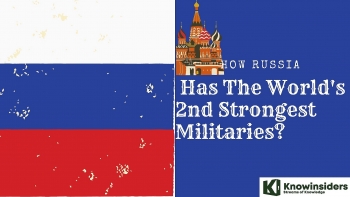 How Russia Has The World's 2nd Strongest Militaries How Russia Has The World's 2nd Strongest Militaries Russia is ranked 2 of 140 out of the countries considered for the annual The Global Firepower Index (GFP) review. We will learn about the ... |
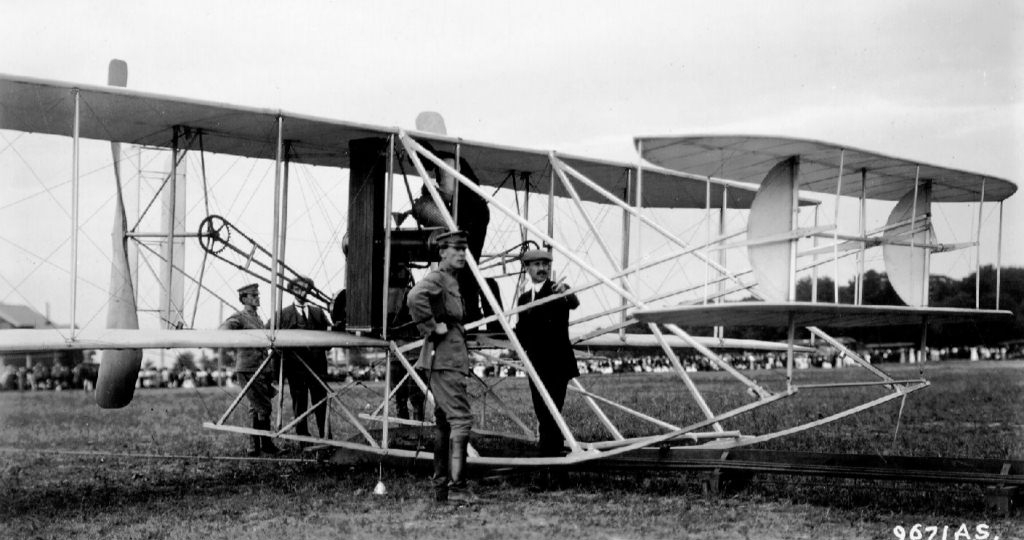 What Is The First Military Airplane In The World? What Is The First Military Airplane In The World? The 1909 Wright Military Flyer is the world's first military airplane. Read on to know its history. |
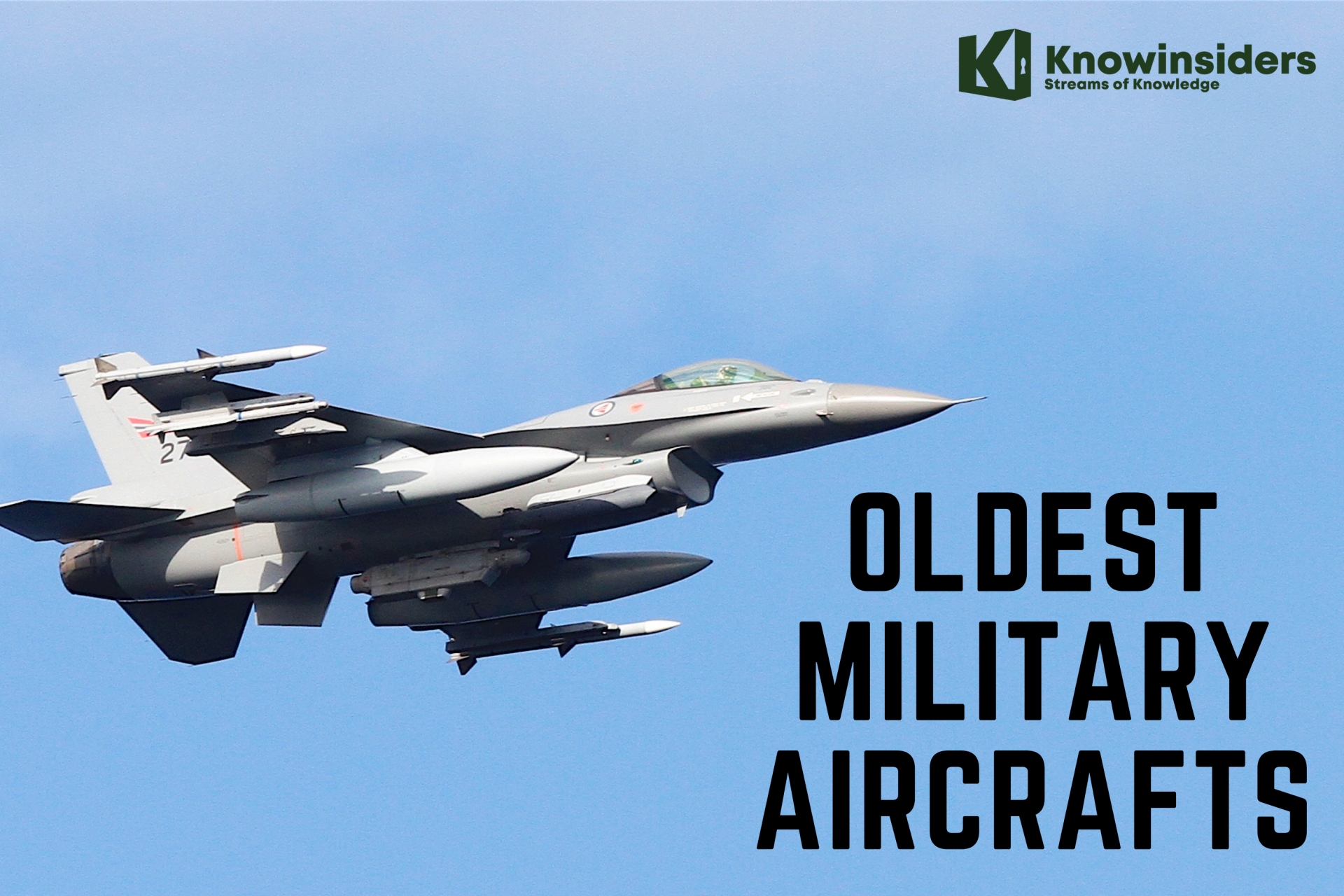 Top 10 Oldest Military Aircrafts In Service Top 10 Oldest Military Aircrafts In Service Check out a list of 10 oldest military aircrafts that have been in service for over half a century. |























